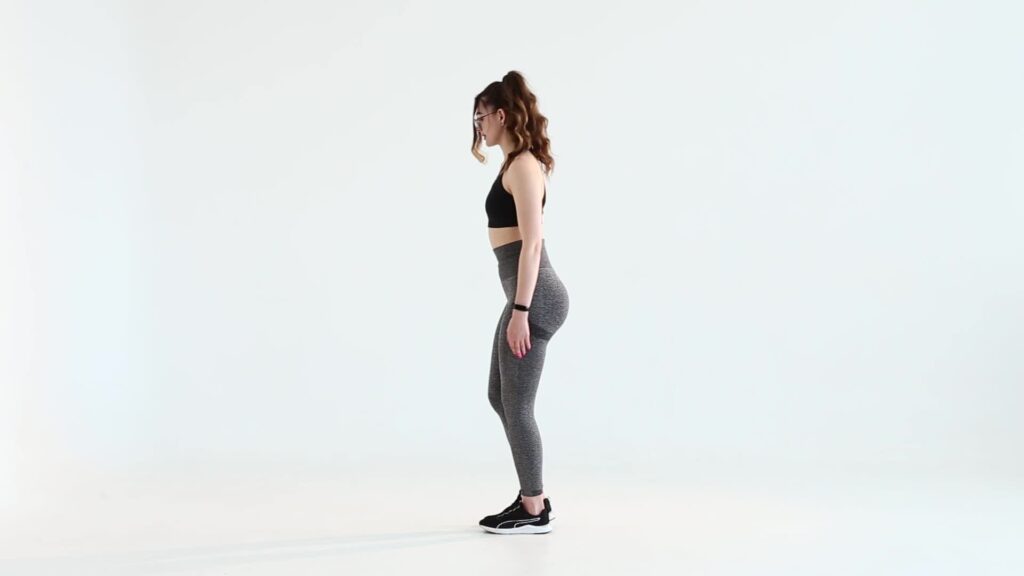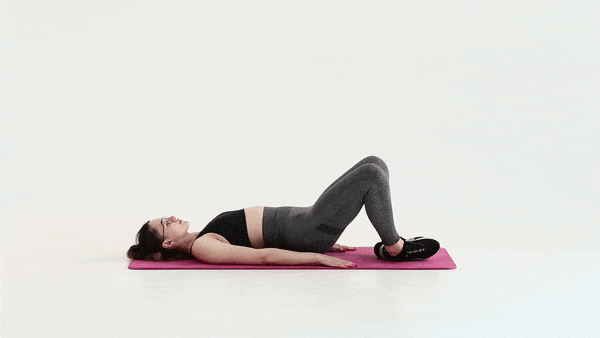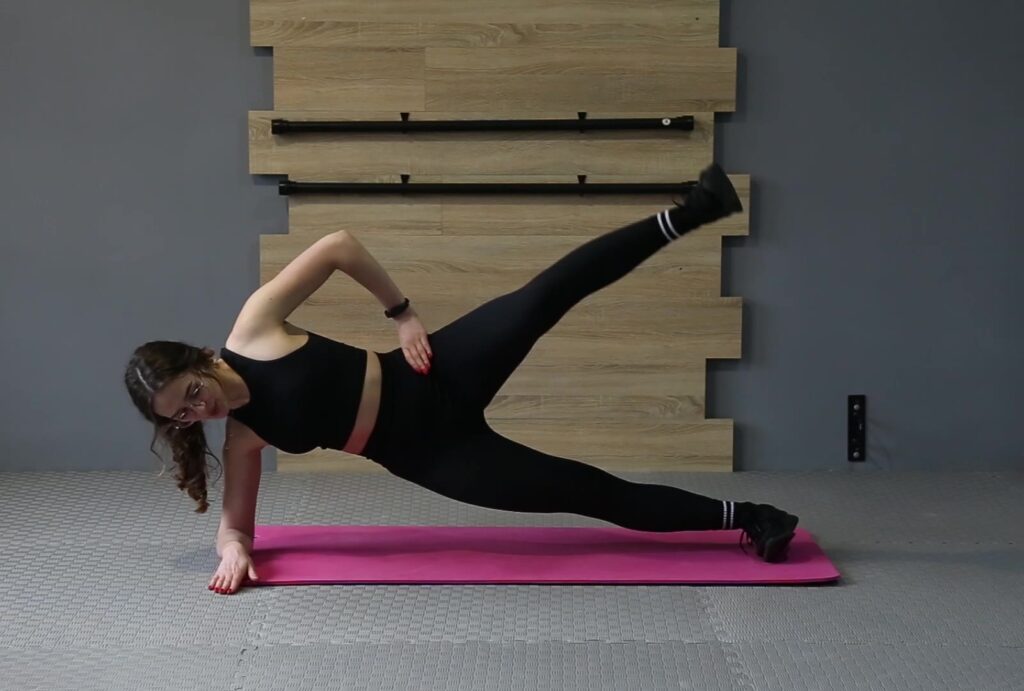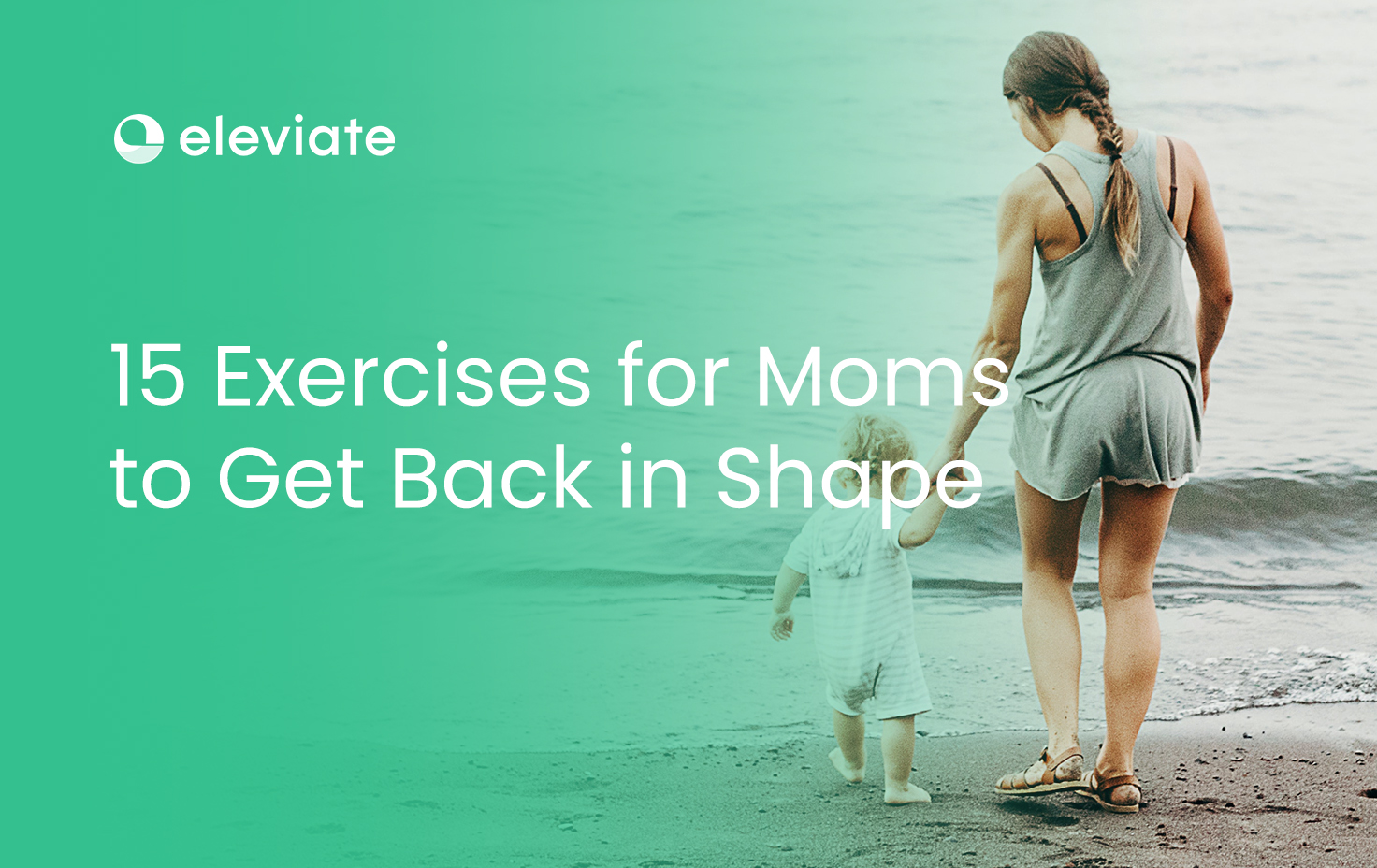It is common for many women to struggle with an effective exercise routine when they become new mothers. Every lady strives to get back to her pre-pregnancy self as soon as possible, but that is not always on the table. It is critical to realise that any woman is faced with a plethora of challenges postpartum. Aside from your physical health, your emotional state should also be taken into account. You should let your body recover and work on the mental stability and energy levels in between. That is where the best postpartum workouts come of great use. And we are not talking marathons here. We are talking about safe postpartum exercise instead. Let's explore the subject in detail, shall we?
Postnatal exercise: a quick guide
Some new moms want to begin exercising the minute they are out of the delivery room. However, it isn’t that simple. You have to realise that your postnatal fitness will differ from the physical activity levels you were used to before getting pregnant. Your postpartum recovery depends on how mindfully you approach the matter. Among the primary factors to evaluate before you choose a postnatal workout program are the following:
Type of pregnancy and delivery – the more challenging those parts are, the longer you will have to wait before getting back on track. Remember that caesarean delivery requires you to consult your doctor before taking up any light exercise. Sometimes, it takes several weeks postpartum for the body to heal well.
Overall well-being – it is completely natural to feel tired and on the brink of exhaustion with a newborn in the house. That is why you shouldn't aim for an hour-long exercise routine straight away. Going slowly by starting a 10-minute walk twice a day is a good idea.
Breastfeeding and postpartum fitness – you should always pump before you start your workout session. A supportive bra is a must too.
Pros and cons of postpartum exercises
As a new mom, you are bound to listen to your body, but there are other aspects to consider. There are certain benefits and risks to exercising during the postpartum period, and you should be well aware of them.
Pros
Boost in mental and body strength
Better sleep quality
Increased levels of energy
Valuable emotional benefits
Feeling in control
Balanced hormones
Weight loss
Cons
Potential post-birth complications of overly strenuous workouts
The workout routines can't be initiated too soon
When should you start exercising?
There is no one-size-fits-all postpartum fitness routine. But one thing remains unchanged – you shouldn't start too soon. The best path to take is to ask your doctor about when you can take on your postpartum workouts. Most specialists advise that you keep away from exercising for at least 6 weeks after giving birth. However, it depends on your general condition and well-being. It may take a little longer than 6 weeks for some women to heal, while others are back on track after 2 weeks.
It has to be mentioned that your pre-pregnancy fitness levels and regular workouts during pregnancy may be useful after you give birth. Women who work out regularly, no matter their condition, can succeed with a more effective postpartum routine than those who don’t exercise regularly. In either case, patience is the key.
15 Best postpartum exercises to try
Before we proceed with the list of the best postpartum exercises to try when you start working out after giving birth, you should remember that your fitness level will differ tremendously from what you may have been used to. Thus, you should lower your expectations and listen to your body instead of pushing it over the edge. The truth is that even the most insignificant activities will positively affect your general condition.
1. Diaphragmatic breathing
This is the most basic postnatal exercise you can incorporate into your routine. It is quite easy to underestimate the effect of such a simple breathing exercise, but the positive changes it brings are invaluable. Only a few minutes of deep breathing on a daily basis will help you deal with stress, postnatal depression, and anxiety. On top of that, the practice will enhance your core strength. You can exercise while you lie down or sit comfortably:
Take a yoga mat and lie down on it.
Relax and try to focus on the tension that spreads from your toes throughout your body.
Place one hand on your chest and the other on your stomach.
Inhale deeply through the nose. Expand the stomach but keep the chest still. Breathe in for 2-3 seconds.
Breathe out slowly.
Keep on repeating the exercise for around 3 minutes.

2. Kegel exercises
Kegel is one of the most recommended pelvic floor exercises. Whether you experience minor pelvic organ prolapse or some urinary issues, Kegel workouts can help you minimise adverse effects by strengthening the pelvic floor muscles. To do this:
Tighten the pelvic floor muscles. These are the muscles you use when you try to stop urinating.
Hold the position for about 10 seconds.
Repeat any time you think about it. The more – the better.

3. Walking
You don't always need an ACE-certified personal trainer to succeed with your post-baby workout. The simplest and most effective exercise to do after giving birth is to increase your amount of walking. You don't need special preparation or equipment to deal with the task – just grab the baby stroller and head to the park. While you are working on your post-baby body, you will also ensure that your baby gets enough fresh air and your mood swings go away.
Walking triggers most muscle groups, but if you choose an uphill route, you will double the load on your glute muscles, which is an excellent opportunity to get back in shape fast.
4. Single-arm rows
If you want to get a tad more area-specific with your postpartum exercises, you should learn how to work on major muscle groups. Let's start with improving upper body strength. Single-arm rows are among the best postpartum exercises.
Take a light dumbbell in one hand or try the exercise without any weights.
Place your knee and your free hand on a bench.
Contract your core muscles.
Exhale and pull the dumbbell up, so your elbow is bent, and then pull your upper arm back.
Repeat the exercise as many times as you can, but remember the number of repetitions so that you can do the same amount on the other hand.
Switch hands.
5. Wall plank rotations
Another option to add to your upper body exercise program would be wall plank rotations. Most experts claim it is the best postpartum exercise for diastasis recti, so keep that in mind. Here's how you can do it:
Stand up facing the wall.
Make sure that your feet are 2 ft away from the wall.
Place your forearms on the wall as if you were standing in the regular plank position.
Retract your shoulders and rotate the body to assume a side plank position.
Hold the position for about 2 seconds.
Switch hands.
Repeat as many times as possible, slowly increasing the number of repetitions.
6. Wall push-ups
Another great exercise for new moms to boost their arm and core strength would be wall push-ups. You don't have to change the previous position (the wall plank). To do wall push-ups:
Place your hands on the wall, and keep your core engaged.
Make sure that you maintain a neutral spine and that the body is in a straight line.
Bend your arms and lower your body toward the wall.
Push back until you straighten your arms.
Repeat as many times as you can. Even two times a day counts.

7. Cat/cow exercise
Now, it is time for the core postpartum exercise to enter the stage. One of the simplest exercises to start with would be the cat/cow pose. Here's how you can do it:
Get down on all fours.
Make sure that your shoulders are above your hands and hips are above your knees.
Arch your back so that your navel is in, and hang your head, assuming the cat position.
Now, press your belly toward the ground and raise your head up, looking at the sun, to assume a cow position.
Repeat the exercise 10 times and watch your neck, back, and core muscles strengthen.
8. Dead bugs
Another core exercise on our list is dead bugs. Here's how you can do it:
Lie down on the floor.
Raise your arms and legs into the air.
Take a deep breath and slowly lower one arm and one leg on the same side.
Breathe out and move the arm and leg back into the starting position.
Repeat the exercise on the other side.

9. Classy bridge
Your lower body deserves the same attention that the upper body gets. One of the best postpartum exercises to tone muscles in your glutes, hamstrings, and core would be a bridge. Here's how you can do it:
Lie down with your feet on the ground and knees bent.
Keep your shoulders on the ground and slowly lift your hips up, ensuring that your core and glutes are engaged.
Put all the weight on your heels and stand still in the top position for a few seconds.
Repeat the exercise 10 times.

10. Quadrupled leg lifts
One more option to introduce into your exercise program would be the quadrupled leg lifts. The exercise has a positive effect on the same muscle groups as the bridge. Here's how you can do it:
Start on all fours.
Raise one leg up and extend it back.
Make sure that the glute and leg muscles are engaged.
Hold the position for a few seconds.
Lower your leg down and switch sides.
Repeat the exercise 10 times on each side.
11. Swiss ball bird/dog holds
Swiss ball bird/dog holds are a good place to start if you want to include some extra inventory in your postpartum workout plan. Here's how you can do it:
Take a ball and lie on top of it.
Make sure that your body is in a straight line.
Keep your palms on the floor with your toes touching the ground.
Look down at the floor and raise one arm and the opposite leg up.
Hold the position for about 2 seconds.
Switch sides.
Repeat the exercise 10 times on each side.
This exercise is aimed at enhancing stability and posture. It can also be useful if you are dealing with lower back pain after giving birth.
12. Swiss ball glute bridge
Don't put that Swiss ball away. There is another beneficial postpartum activity that you can do–glute bridge. Here's how you can do it:
Lie down on the floor, bend your knees and keep the ball near your feet.
Put your feet on the ball, drive your heels in and raise your hips slowly.
Glue your shoulders and upper back to the floor.
Keep the position for a few seconds.
Assume the starting position.
Repeat the exercise 10+ times.
The glute bridge with a stability ball will help you improve your core and pelvic floor muscular endurance.

13. Standard plank
Planks are the best postpartum workout option since you can start doing them only a few weeks after giving birth. Its positive effect on the core and pelvic floor strength, along with your upper body and glutes, can't be underestimated. Here's how you can do it:
Lie down on your stomach.
Keep the forearms on the floor with your toes flexed on the floor.
Raise up on your toes and forearms with the core muscles and glutes engaged.
Keep the straight line.
Hold the plank for as long as you can, gradually increasing the time.

14. Side plank leg lifts
If you feel a little extra adventurous and are up for something more complex than a standard plank, then you should engage your legs in the process. Here's how you can do it:
Start in a normal plank position.
Now, turn sideways.
Raise your body, leaning on one arm, so you stand in a side plank.
Raise your leg up and hold the position for 10 seconds or do some leg raises.
Switch sides.

15. Happy baby pose
Postnatal yoga is one of the leading practices new moms turn to for a good reason. If you want to stretch a little and relieve the pain in your core and pelvic floor muscles, a happy baby pose will be useful. Here's how you can do it:
Lie down on your back.
Bring your knees to your chest.
Open your knees hip-wide.
Place your arms on the inside of your knees.
Grab your ankles with your hands and bend your knees so your heels face upward.
Pull your feet down gently, lowering your knees to the ground.
Hold the pose for around 90 seconds, focusing on your pelvic muscles.
Practical tips on an effective postpartum workout
No matter how eager you are to return to your pre-pregnancy weight and form, you should approach the subject wisely. A few simple tips will point you in the right direction and help you transition through the postpartum period with as little discomfort as possible.
#1 Start with a consultation
Talking to your physical therapist or doctor before you take up any physical activity is the best way to ensure you are not harming yourself. While you may be craving to get back to your regular weighted exercises and strength training, a doctor may recommend mere walking and gentle exercise instead. You should always listen to your doctor, especially regarding such vital matters as childbirth.
#2 Listen to your body
Even if your doctor says that resistance training is okay, it does not mean that you should push yourself over the edge. Sometimes, your mind is ready to carry on with the strength training while your body isn't. Thus, you should do what you can, gradually building up the load.
#3 Inform your instructor
Some new moms choose to stick to a free postpartum workout plan in the safety of their homes, while others want to go to a class. If you choose the latter, you should let the instructor know that you are currently going through your postpartum period.
#4 Find some company
Women often lack the motivation to take on their postpartum workouts, which is understandable. However, if you involve a friend or a family member in the process, it will be twice as easy to pull yourself back together. You can go to an aqua aerobics class together or start a strength training session, each working out at their own pace. It is the company's and support that matters.
#5 Go light on your abdominal muscles
While countless types of exercises trigger different muscle groups, you should take it easy on your abs. While there is no need to skip the postpartum ab exercise altogether, you may choose the simplest options just to slowly tone those abdominal muscles up. For a while, it is better to refuse sit-ups and crunches, but any plank variation works well as an effective postpartum exercise for the belly.
#6 Work on the menu
It is quite easy to assume that the less you eat after giving birth, the sooner the postpartum weight will go away. However, your body does not work that way. If you are breastfeeding, you have to consult your baby's paediatrician on what to incorporate into your diet. Still, even if you are not, you should make sure that your body gets enough nutrition to recover from childbirth. Don't forget about proper hydration.
Postpartum Exercise and Workouts with Eleviate
Childbirth is a miracle that nothing else can compare to. However, the stress it puts your body through can't be treated lightly. Eleviate professionals have worked hard to develop the best postpartum routine you can take on after giving birth. Whether these are pelvic floor exercises or spine-neutral workouts that you seek, we have them covered for you. A healthy and nutritious menu and breastfeeding tips can also be incredibly helpful. Our supportive and responsive community can also help you find all the answers that may arise during the postpartum period. Lastly, you can count on effective mental health advice after signing up with Eleviate!





